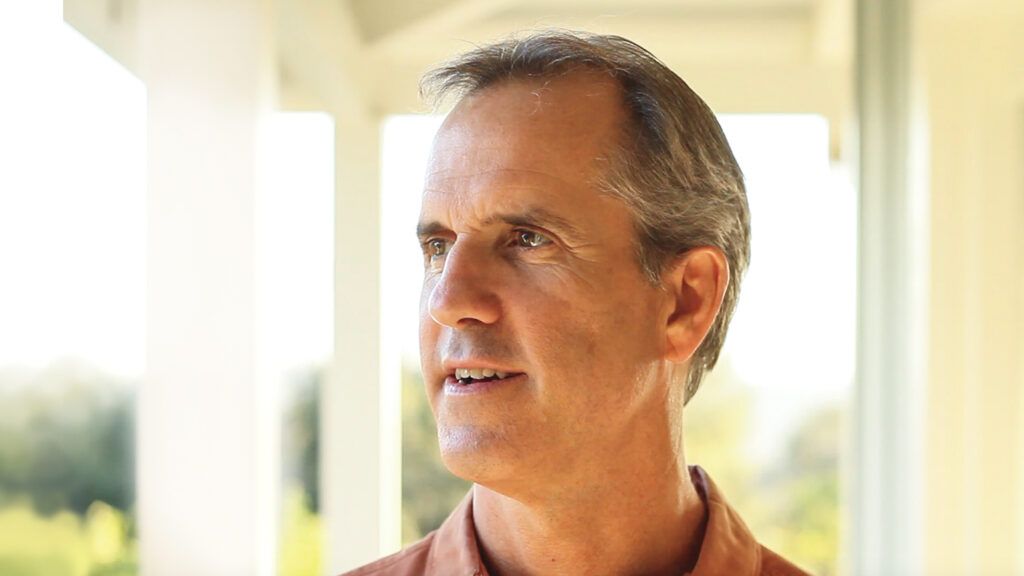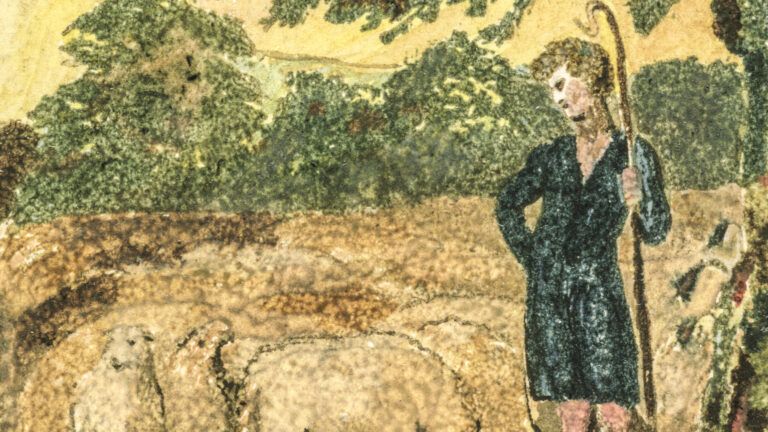William Peters has dedicated his life to the study of end-of-life phenomena. He holds master’s degrees in education and counseling psychology, and is the founder of the Shared Crossing Project, an organization that educates people about mystical happenings during the dying process. He sat down with Mysterious Ways to discuss the Shared Crossing Project’s research into a type of end-of-life phenomena known as the shared death experience and what it teaches us about our enduring connection to each other and the mysterious journey from this life into what lies beyond.
What is a shared death experience?
A shared death experience, or SDE, occurs when a living person observes the transition of a person who is dying. They experience the initial stages of the afterlife together. During an SDE, living experiencers are allowed to witness a dying person’s journey from this life into what lies beyond.
An SDE can happen to caregivers, loved ones and bystanders —seldom between total strangers. They occur between people who may not know each other well, such as a dying person and a nurse, when the experiencer was often a source of comfort for the dying person in the final stages of life.
How did you become interested in studying SDEs?
In 1979, at 17 years old, I was in a skiing accident and had a near-death experience, or NDE. I went out of my body, saw my life in review and went toward the light. I asked God to go back. After I recovered, I had no language or context for my experience and told no one about it.
In 1993, a blood disorder nearly killed me. I had another out-of-body experience, in which I floated over my body in bed. After that, I realized how profound these experiences were and became more curious.
Then while working in hospice, I had my first SDE. I was sitting with a dying man, reading him a story. I had yet another out-of-body experience. But this time, I wasn’t the one who was dying. The man was floating along with me. He smiled at me as if to show he was glad I was with him. He died shortly after. Being able to witness this was a divine gift, even if I still didn’t quite understand it. I wanted to learn more.
What are some examples of common shared death experiences?
Every SDE is different, but some common examples include seeing the dying person young and healthy, witnessing a mystical light or going to a heavenly place with the dying person. These experiences can occur as visions, out-of-body experiences or during sleep.
SDEs can happen at the bedside of the dying person or hundreds of miles away. Our research shows that about 60 percent of people who shared their stories with us had remote SDEs.
Tell us more about how living people “experience” this transition.
Our research team has collected more than 200 accounts of SDEs, and we are systematically analyzing each experience. We’ve observed that these experiences usually fall into four categories: sensing, witnessing, accompanying and guiding.
Sensing means the experiencer has a feeling that their loved one is dying. They might even see the person for a moment.
During witnessing, the experiencer sees what the dying person sees during transition. This might include observing the dying person’s life review or watching them be greeted by a deceased loved one.
Accompanying is when someone experiences the transition with the loved one, journeying alongside the dying person toward a light or through a tunnel. I remember one story from a widow. She recounted how she’d gone with her husband as he ascended, felt the heavenly state of euphoria and then handed him over to his deceased mother. For her, it was an affirmation that her husband was at peace and with his beloved mother.
Guiding occurs when the experiencer helps the dying person transition from this life to what lies beyond. One respondent had his SDE while he was riding in a car. He was relaxing in his seat, and a vision came to him. His father was there, confused about where to go. The son guided him toward a light and watched him go through a portal. When the son arrived at his destination, he learned his father had died.
What about remote SDEs? Do they happen only between two people who have a close connection?
Yes, most remote SDEs are experienced by someone who has a close relationship with the person dying. It can be someone they were close to a long time before. One woman hadn’t had direct contact with her ex-husband in a decade. One day, she felt his presence come to her. She heard his voice in her heart, thanking her for the years they’d shared and saying goodbye. She immediately texted her daughter, who told her that he had just died.
What do SDEs say about our relationships with others?
SDEs can honor our important relationships. Even if a relationship ends, such as the case of the divorced woman, SDEs go beyond the human and the ego. They can give us a sense of profound gratitude for having had the opportunity to connect with each other. SDEs reveal that some bonds are so deep that they can continue after life.
SDEs seem a lot like NDEs. True?
SDEs and NDEs have similar if not identical phenomena.
One reason I find SDEs so fascinating is because they help validate NDEs. Some dismiss NDEs as the body’s biological response to physical trauma. But SDEs happen to a healthy person. And there are so many commonalities in first hand accounts of NDEs and SDEs, it has to be more than a coincidence.
Also, we’ve noticed that some people who have SDEs had an NDE earlier in life, as I did. It’s possible that having an NDE opens you up to having more mystical experiences. We don’t know for sure yet, but we’re studying it.
How do people usually react to their SDEs?
People don’t doubt what they’ve seen. Most view it as a positive experience and describe it as divine or sacred.
Experiencers report knowing that their departed loved one is in a better place. Some say the SDE revealed that they will see their loved one again. Others say it gives their life a greater context or reaffirms their faith, as if something they’ve always known has been reawakened.
One of the most common reactions is a sense of healing from grief. SDEs show that some aspect of us goes on after death; there’s a continued consciousness. So instead of trying to forget their loved one, experiencers feel empowered to let go while staying spiritually connected.
Why study SDEs? What do you hope to do with these stories?
This phenomenon is part of the human experience. We haven’t discovered it; we are rediscovering it.
When people have SDEs in a medical setting, their accounts are often misunderstood, dismissed and sometimes disparaged. With our research, we want to show people how normal SDEs are, so medical professionals know how to handle them when they are reported.
I also want these experiences to help us talk about death. Death and dying are perhaps the greatest human event. Death is largely shrouded in mystery, but it deserves to be studied. It’s wondrous. We shouldn’t fear it. We should honor and prepare for it.





